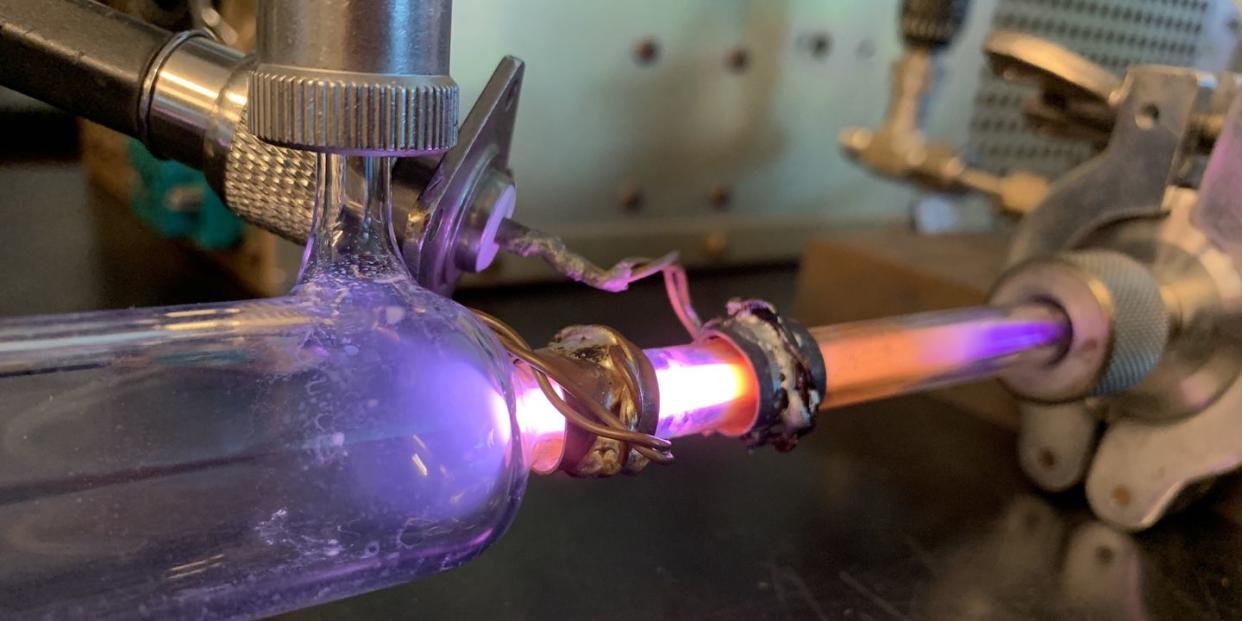Photon-Boosted Lasers Could Carve Out Cancer Like a Scalpel

Scientists have boosted laser light so that it can enter the body to target cancer.
While x-rays easily “see through” the body, lasers don’t, and converting them requires adding more excitation energy.
The secret is using nontoxic silicon nanocrystals and molecule glues called ligands.
Cancer radiation treatment may get a tune-up in the form of upcycled light beams powered by silicon. The process results in high-energy beams that combine the best of traditional x-rays and radiation therapy with the cancer-fighting potential of light.
Researchers at the University of California Riverside have found a way to use microscopic silicon nanocrystals to add photon energy and “power up” existing beams of light. This is important because only certain energy wavelengths of light are able to penetrate the human body. Turning a therapeutically effective kind of light into something that's able to enter the body could mean better or even just less invasive cancer treatments.
Traditional radiation therapy uses x-rays, or sometimes protons. X-rays are a form of invisible light at a low wavelength that can enter the human body. If the idea of some waves penetrating and some bouncing off seems too wild, remember that the sun’s light doesn’t get inside your home, but radio stations do. All solid things are just wiggling in a smaller way than we can see, with room for certain things to move through them.
Proton therapy is actually representative of the previous generation of research into less invasive cancer treatments because of how finely it can be focused and with less damage to surrounding tissue. But it was also the subject of major marketing hype that some doctors argued was inflated and misleading, especially based on marketing to men with prostate cancer who were comforted by strong claims that proton therapy was much safer. Cancer treatment has moved forward with small steps and checked expectations, not dramatically big promises.
Laser light can have therapeutic effects in the body, but lasers don’t penetrate far into the body on their own. This is how lasers can zap your hair follicles and not your internal organs. Compare that with x-rays, which are so penetrative that you have to cover everything you can while the technician stands outside the entire room.
For decades, scientists have wondered how to turn laser light into a form that can enter the body without using toxic materials to “boost” the laser’s photons. Toxic nanomaterials are okay for some applications—people don’t eat their car parts or construction materials, and “toxic” doesn’t mean something is morally bad. But for health applications, the standards are stricter and have precluded the materials scientists have used to turn light into higher-energy light.
The UC Riverside team has solved this problem by using medical-grade silicon, which is nontoxic and safe for human use. Researchers took nanocrystals of silicon and closely examined them in order to design ligands, which are like molecule glue, that can hook into the nanocrystals and carry more energy. If light carries higher energy potential, it can go further into the human body, which is very resistant.
The researchers say their application isn’t limited to cancer treatment and could improve solar power and quantum state computing. In solar energy, scientists continue to research ways to pump more energy out of solar collectors in a shorter time in order to minimize waste and improve energy payload.
For quantum computing, the UC Riverside team’s mechanism to add energy does so by manipulating the triplet state, which is a reference to a particle’s quantum positioning. Whether molecules are receptive to certain kinds of tinkering or not can improve our grasp of overall quantum information.
You Might Also Like

